Why Every Room Needs a Piece of Brown Furniture, According to Designers
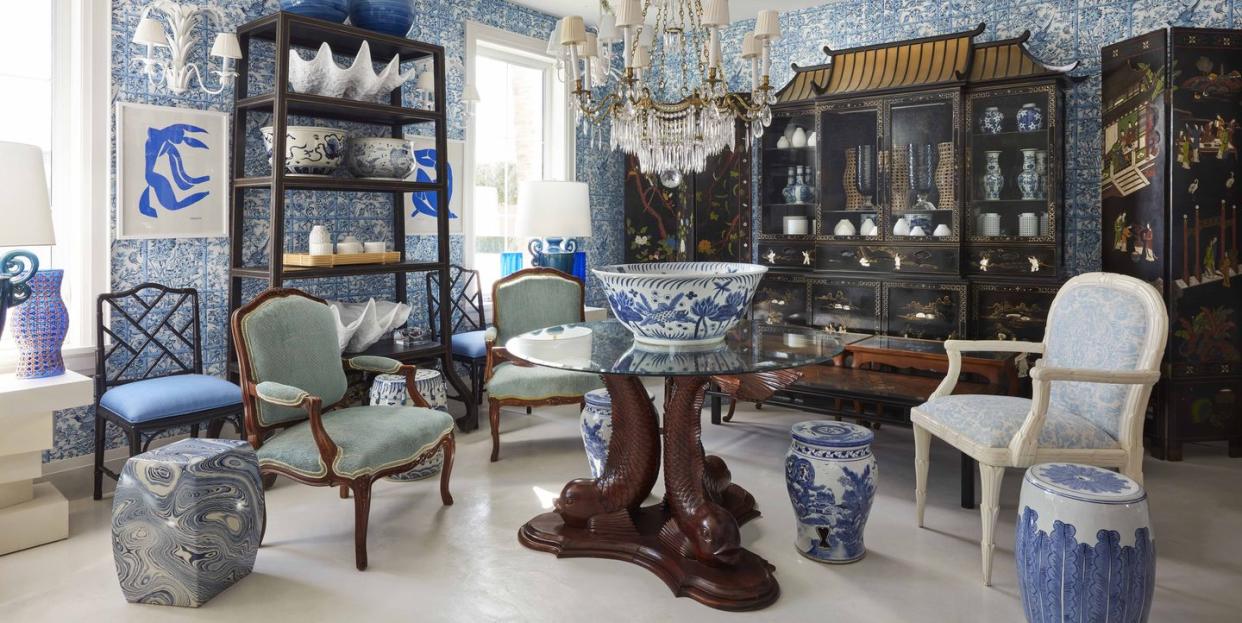
- Oops!Something went wrong.Please try again later.
In December 2018 while shopping for a bed for her daughter, Sonia Davis stumbled on the most unlikely of gold mines: an antique walnut chest of drawers missing its top. (See what I mean by unlikely?)
Davis didn’t have a spot for the chest in her own home, but she fell for its clean lines and handsome square feet. “It just needed a new top and some cleaning. It was offered at an unbelievable price and I knew it was worth so much more,” said Davis.
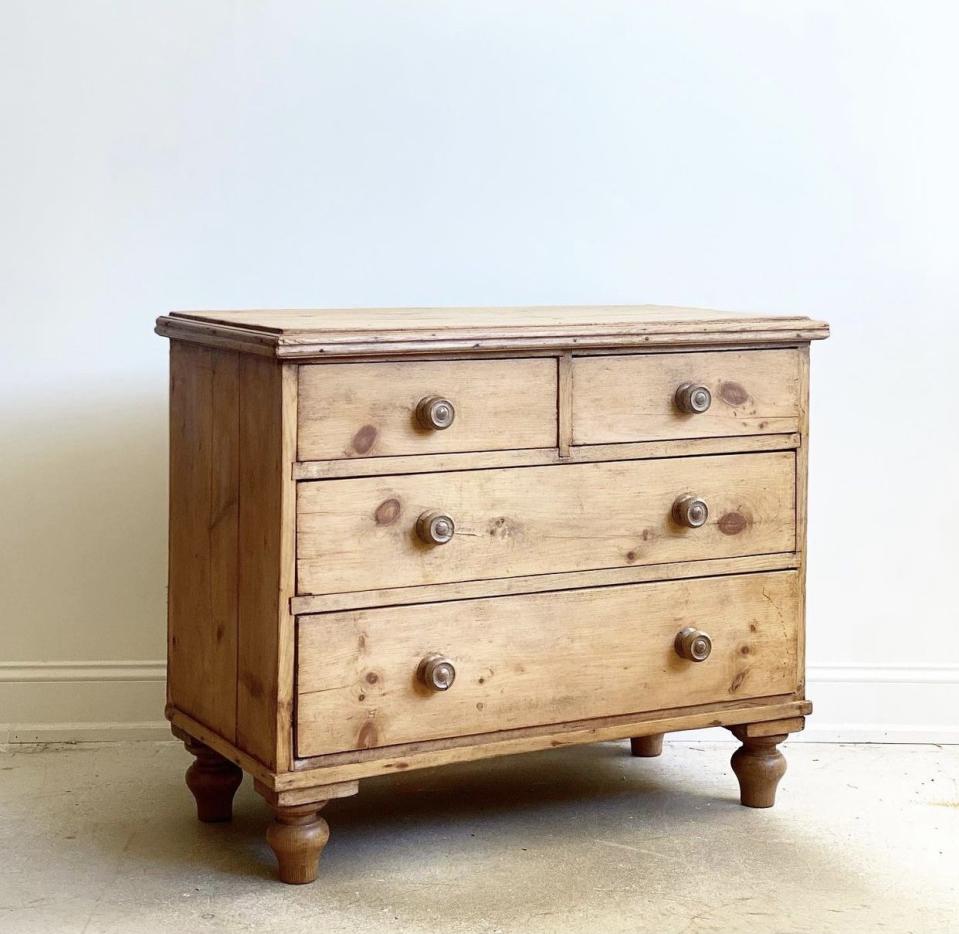
So she bought it with plans to fix it, then sell it. Along with her husband, Ryan (“my secret weapon because he knows all the tricks to taking care of antiques, including what not to clean them with”), Davis cleaned the chest and took it to a marble fabricator to have a new top made.
She then created an Instagram account and posted a “sneak peek” photo of the chest taken in her basement then the finished piece taken in her foyer. “It sold within hours that day,” she said.
After that, Davis realized she was on to something and officially launched Found. “There were not many people focusing on selling classic, brown furniture pieces in excellent condition and making them attainable,” she said. “So, I started going to auctions looking for things I would want in my own home.”
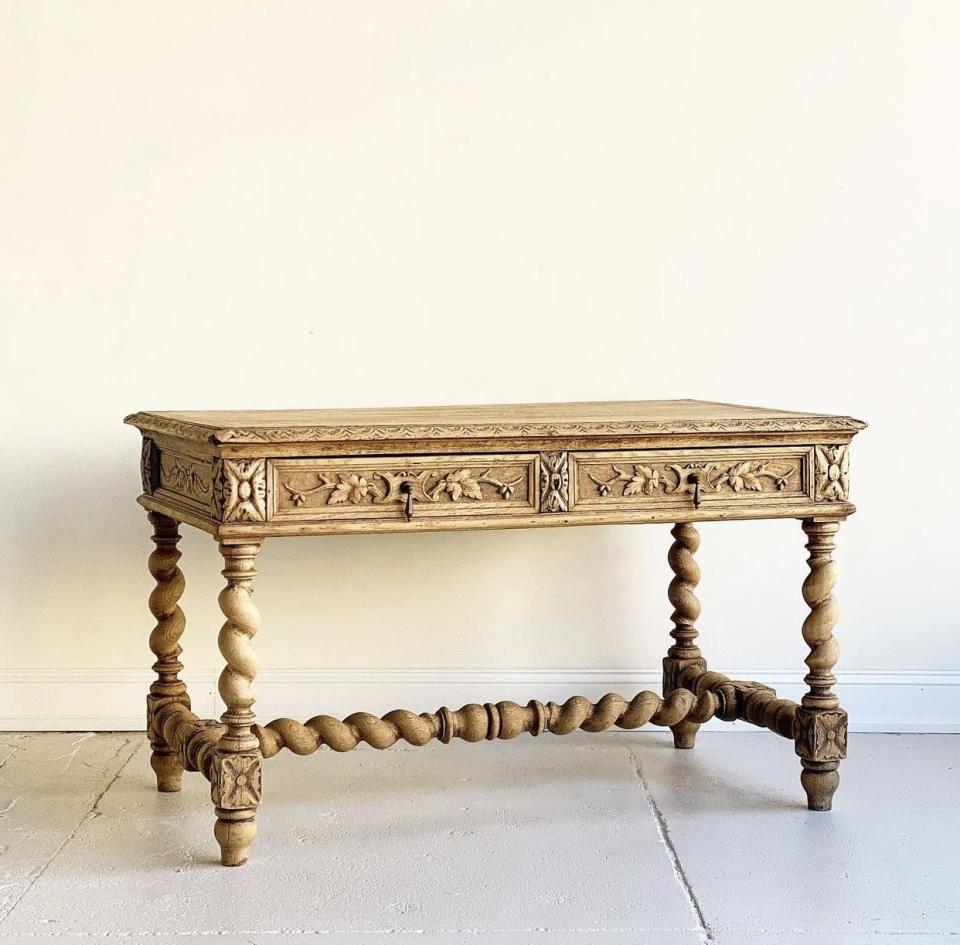
Within a few months, Davis amassed thousands of followers on Instagram, where she posts pictures of one antique piece, often “brown” wooden furniture, each day in a distinctly simple, consistent fashion: always by itself, against a white wall, with detail images in the carousel.
These days, nearly every piece she posts sells in a matter of minutes—not hours. Recently, I inquired about a piece that had been posted for 21 minutes; it was already pending with another buyer, and was marked sold after another 15 minutes.
When I asked Davis why she thought her pieces fly off of her feed so quickly, she offered two thoughtful explanations, one having to do with how she presents her inventory, and the other having to do with when she opened her business.
First, her presentation: “I think I’m able to push through all the Instagram noise with clean pictures of the furniture and lots of white space,” she said. “The pieces really speak for themselves. I am not sharing the stories behind them, or anything about me. I just present them in their state.”
Second, her timing: “I think during the pandemic, people have found comfort in traditional. I’m always hearing from clients things like, ‘I grew up with something like this in my parents’ or grandparents’ house’—and that can be a great source of comfort, whether someone realizes it or not. The kind of furniture I sell adds history, character, and warmth, all of which is very attractive to people right now.”
Instagram-friendly presentation and shifting style preferences aside, there’s a pragmatic explanation for the recent rush on brown furniture, as well: it’s available. No lead times, no supply chain issues.
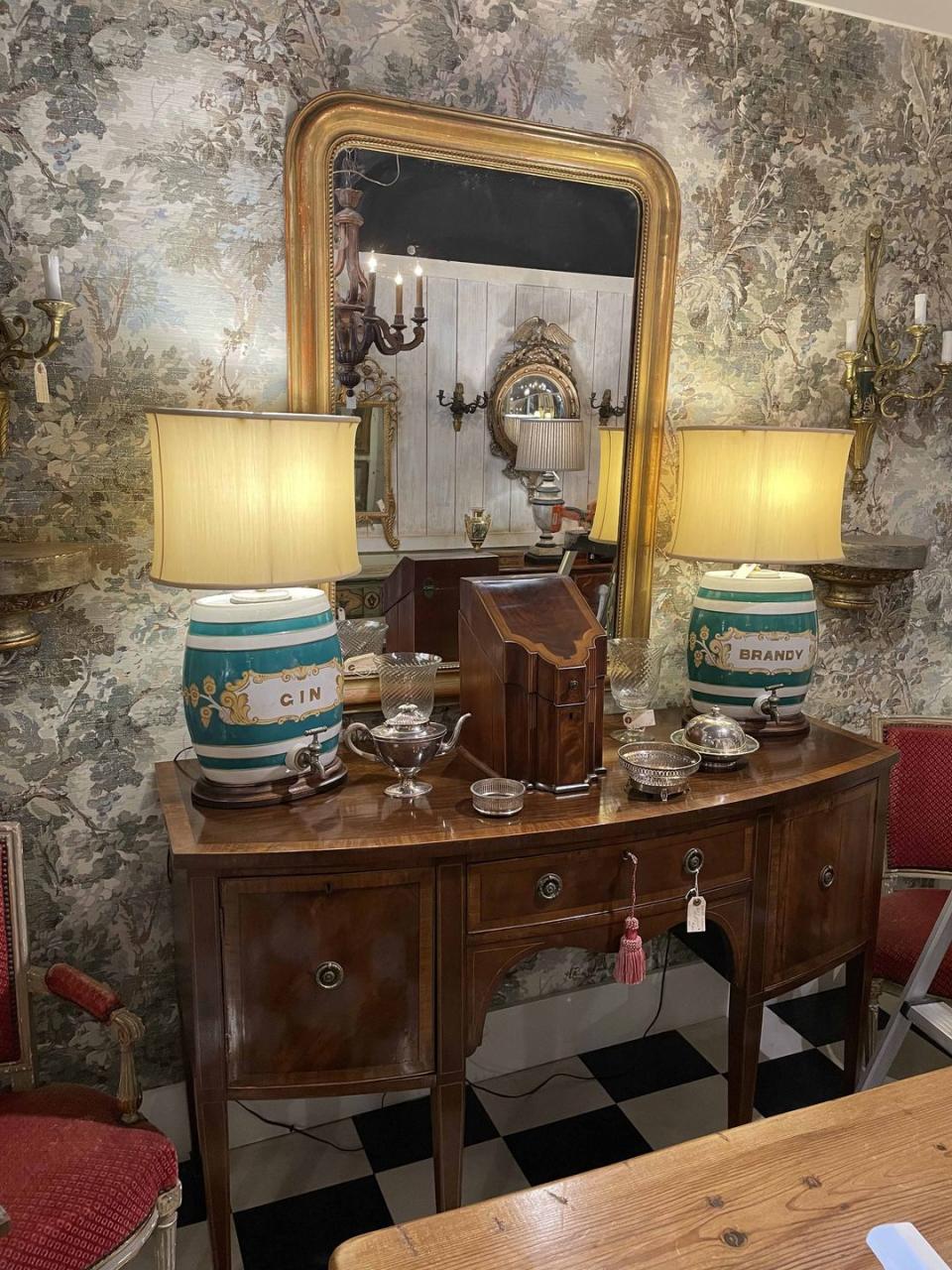
Earlier this year at the Nashville Antiques and Garden Show, I met Kenny Ball, another Instagram-famous antiques dealer. I’d arrived a few minutes late for early shopping—a critical error, it turned out—and was wading through all of the beautiful pieces already marked with red “sold” tags when I looked up and saw his booth.
So I introduced myself and asked him what he thought was driving the Supermarket Sweep-style shopping spree I’d heard had taken place within minutes of the show opening its doors. “I’ve always sold plenty of brown furniture,” he said, “but I do feel more people are buying it now. I’m seeing younger people buying antique pieces now. They’re finding it’s a better value, they can get it right away, and the look is good.”
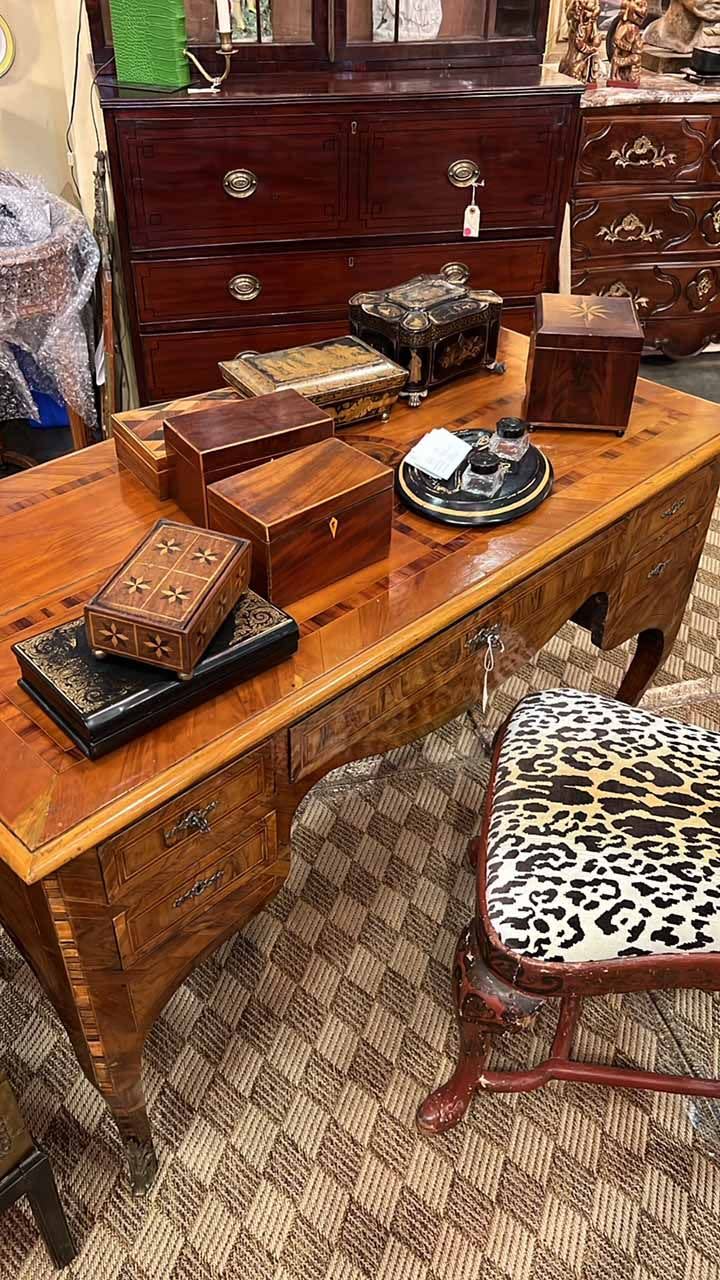
While Ball, who is opening a larger showroom in Charlottesville, Virginia, in June, is nonplussed at shoppers returning to antiques once again (“It’s like fashion—the classics never go out of style!”), he is surprised by how much product he is shipping. “We ship all over the country now. Instagram has become a great selling tool for me. But the customers have to trust you. I’ve been doing this for about 30 years and feel like I have a good reputation,” he said.
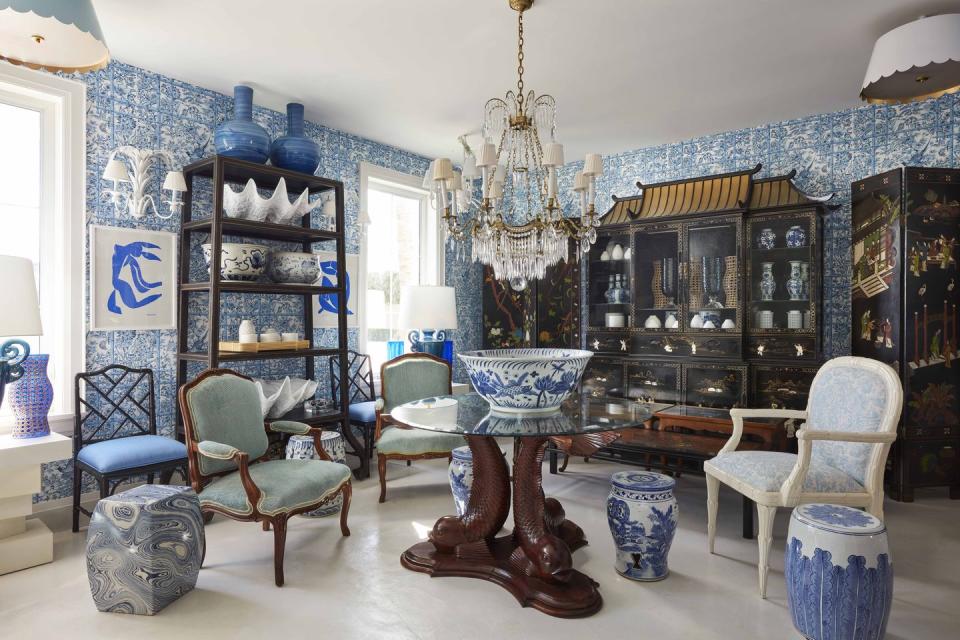
Designer Meg Braff, who recently opened a second showroom in Palm Beach (the first is in Locust Valley, New York), is also seeing an uptick in antique wood furniture sales across the country.
“We are selling quite a few antique dining tables and chairs again,” she said, when I visited with her on the eve of her new showroom opening. “There has been a noticeable return to ‘old school’ or even ‘grandmillenial’ decorating in New York. Palm Beach skews a bit more modern, but wood furniture looks quite at home in a lot of the grander homes. I am loving painted antique furniture as accent pieces in Florida.”
As for why, Braff attributes the trend to a rediscovery of the joy of collecting pieces over time. “Part of the fun of decorating is the slow build, adding to your rooms and collections over time and making your home a real reflection of yourself,” she said.
Braff said that process allows a collector to “gain confidence in her personal style, and realize that a mix of styles and eras is much more interesting than buying all new beige and white furniture in one quick shopping excursion.”
Plus, “wood furniture has a place in just about every room,” added Braff, who noted that pieces like large antique French provincial armoires can be used as an alternative to custom millwork. “Mixing in antique furniture pieces is a great way to add some gravitas to a new construction home,” she said.
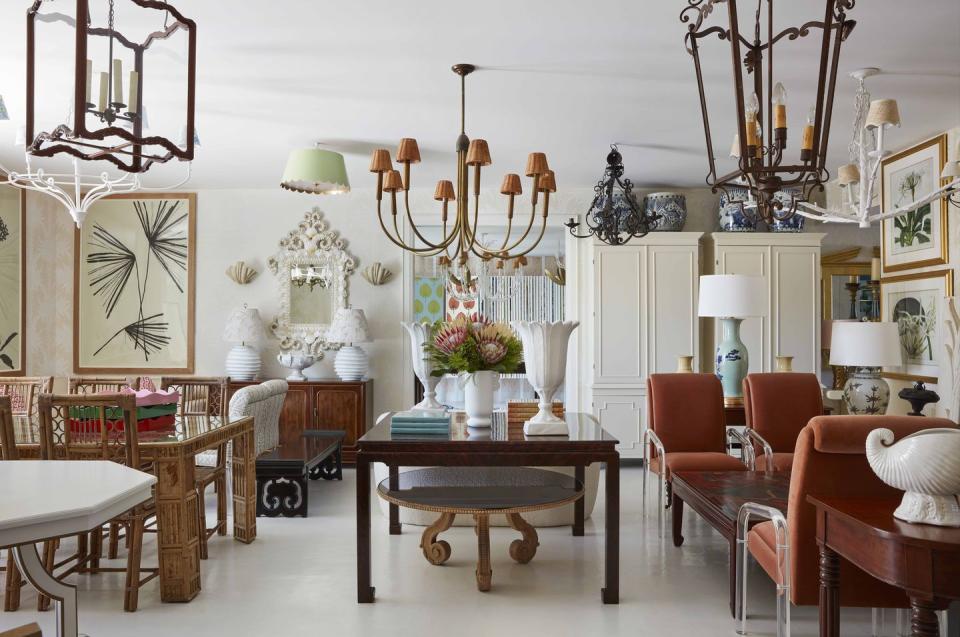
In terms of giving those older pieces a more contemporary look, Braff recommends considering a range of finishes for the other pieces in the room, from brass and gilt mirrors to porcelain lamps or white plaster ceiling fixtures. “Wood furniture also works well against wallpaper because it adds a bit of richness and depth,” she said.
Mixing in modern art is another designer trick for giving new life to antique wooden pieces. “A great modern painting looks incredible over an antique chest, console or sideboard,” said Ball, who noted that paintings from the mid-twentieth century with interesting frames have become popular items for his clientele. “Anything large and abstract does well,” he said.
When buying brown furniture for clients or for her own showroom, Braff tends to look for pieces that are a bit streamlined with good proportions. “Regency consoles and chairs are things I am always looking for, because they tend to mix well with modern and antique furniture,” said Braff.
The designer also keeps an eye out for large mid-century wood credenzas from the 1960s and 1970s. “They’re often a great fit under today's huge TVs, and they can anchor a room the same way a fireplace can,” she said, noting that she often keeps them in their original finish but also loves lacquering them a fun color.
Like Ball and Braff, Davis has recently expanded the Found retail footprint with a larger showroom in Birmingham, Alabama, and has also observed that her customers are increasingly younger—and further flung.
“I am happy to say we’re now shipping all over the country,” she said of her Instagram sales. And of her in-person shopping, which she offers by appointment or during monthly shopping events, “I’m surprised by seeing younger people shopping with their moms. It’s so fun and I love seeing it.”
You Might Also Like

